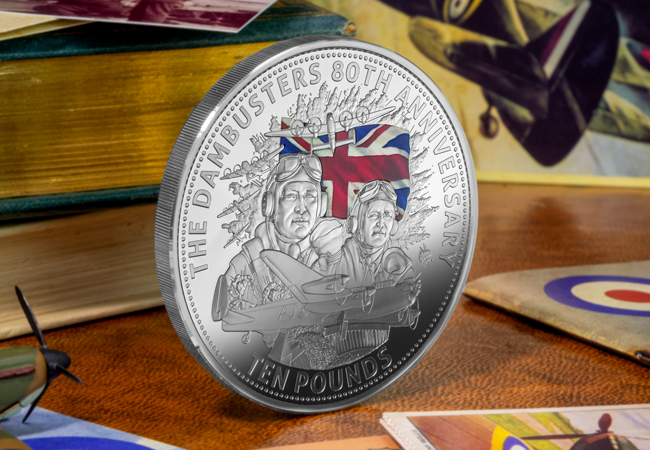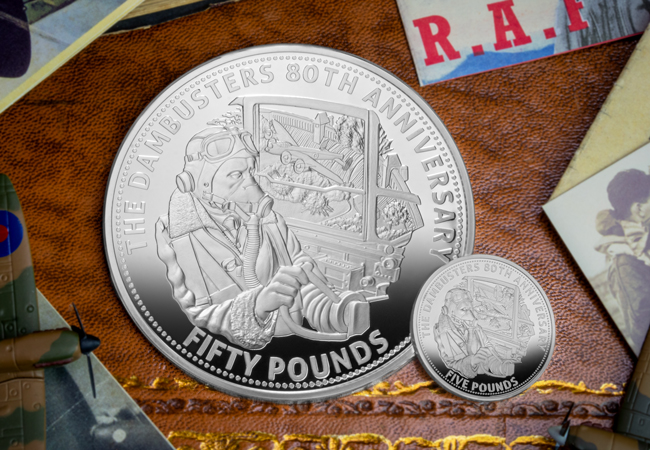Blog Home
Introducing the SUPERSIZE commemorative issued to celebrate King Charles III’s Inaugural Trooping the Colour ceremony
On the 17th June, next Saturday, His Majesty’s FIRST Trooping the Colour celebrations will take place on Horse Guards Parade.
King Charles III will be taking the salute and will hold the appointment of Colonel-in-Chief of the Regiments of Household Division in a ceremony that will be watched by millions of people all across the world.
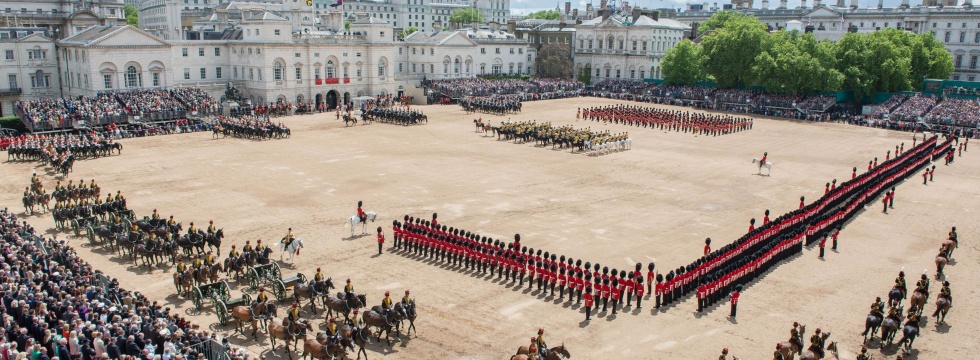
Image Credit: Corporal Paul Shaw/MOD.
To commemorate this historic event, a SUPERSIZE 100mm Inaugural Trooping the Colour Bronze Medal has been issued for release.
Weighing in at nearly half a kilogram, the impressive 100mm diameter ensures that the remarkable detail and superbly illustrated design by talented artist Jean-Michel Girard can be appreciated to full capacity.
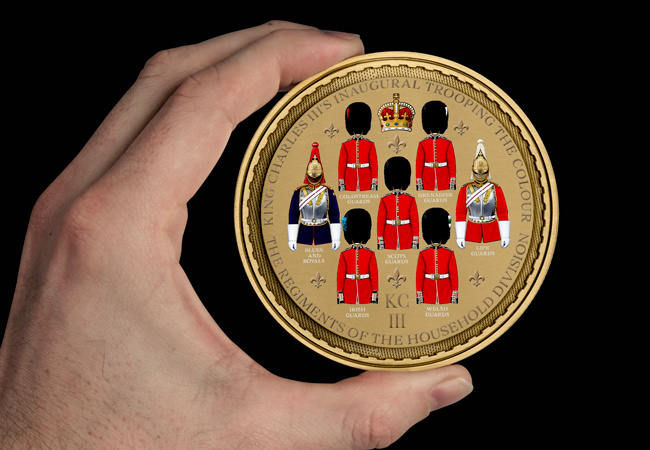
The medal features specially commissioned artwork that depicts the 7 regiments in the King’s Household Division:
- The Life Guards
- Blues and Royals
- The Grenadier Guards
- The Coldstream Guards
- The Scots Guards
- The Irish Guards
- The Welsh Guards
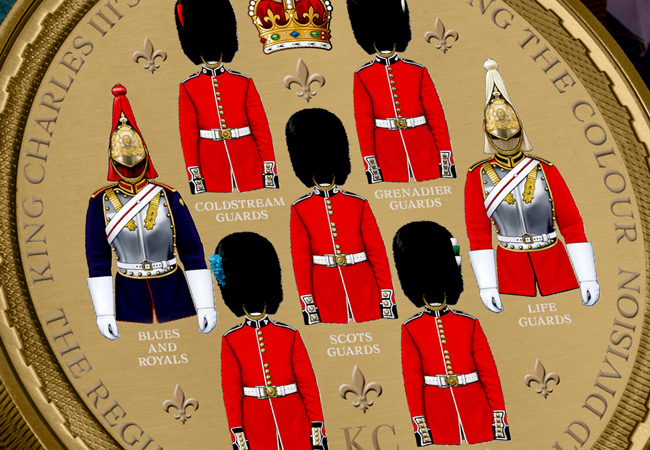
The obverse of the medal features the famous Magnae Britanniae design, completed with Antique Finish.
The medal has been issued with a strict edition limit of ONLY 495 worldwide, therefore many collectors will miss out of owning one of these masterpieces.
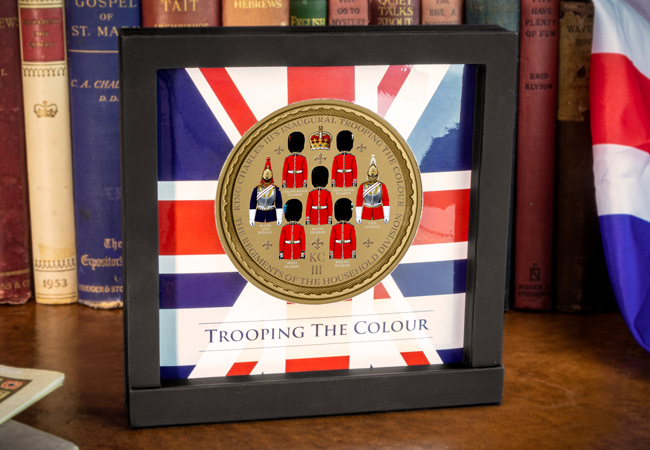
This stunning SUPERSIZE commemorative is a true masterpiece and emphasizes the grandeur of the occasion it represents.
With ONLY 495 available worldwide, you must ACT NOW to secure yours and own a piece of history at exceptional value.
Prestigious NEW Dambusters £5 Coin Range
This year marks the 80th Anniversary of the Dambusters Raid, one of the most famous air operations of World War II and an example of Great Britain’s daring wartime ingenuity.
The operation involved 133 heroic RAF crew flying 19 Avro Lancaster planes – the magnificent WWII bomber that delivered Barnes Wallis’ astonishing “bouncing bombs”.
And now, 80 years on, a spectacular range of British Isles coins have been authorised to honour this legendary chapter in RAF history.
Each coin commemorates that audacious midnight raid on Germany’s Ruhr Valley dams in May 1943, arguably one of the turning points that led to British Victory in World War II.
View the coins below and all the information you’ll need to order your favourites.
ONLY available from The Westminster Collection: The Dambusters 80th Anniversary £5 Pair
Exclusively available from The Westminster Collection, The Dambusters 80th Anniversary £5 Pair has been issued by Jersey and Guernsey and fully approved by Buckingham Palace.
Featuring specially commissioned designs by David Lawrence, both coins are struck to a pristine Proof finish and housed in a presentation case with Certificate of Authenticity. What’s more, a strict worldwide edition limit of ONLY 4,995 has been set.
The Limited Edition Silver Proof Collector Set – own it today with JUST £29.50
This STRICTLY LIMITED Collector Set includes two British Isles Silver Proof £5 Coins that have been fully approved by Buckingham Palace, alongside a Sterling Silver Proof Commemorative.
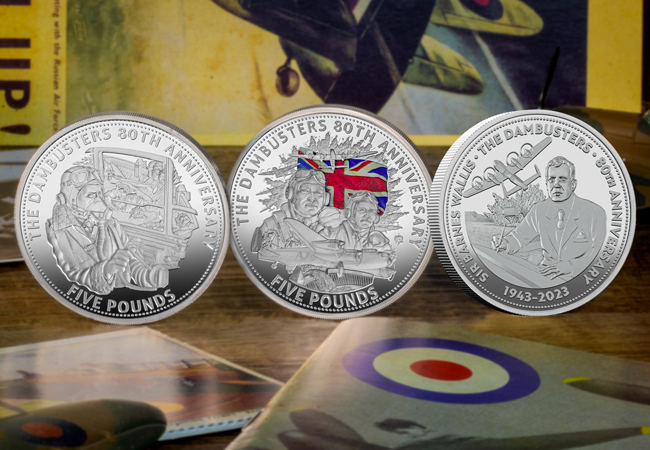
Importantly, this is the ONLY way you can own the Dambusters 80th Anniversary Silver Commemorative – it will never be released individually.
A strict edition limit of JUST 750 has been authorised for release worldwide.
This makes the coins more than 16 times RARER than the UK’s most recent Silver Proof £5 that completely SOLD OUT of 12,500 coins in a matter of days. So, you can see why this new collection is so significant and why so many collectors will miss out…
Demand will outweigh availability – JUST 195 Prestigious Silver 5 Ounce Coins issued
Struck from FIVE ounces of 99.9% Pure Silver and hand-polished to a pristine Proof finish, the reverse design is inspired by the classic movie poster for ‘The Dam Busters’ and features Wing Commander Guy Gibson alongside the legendary Avro Lancaster Planes.
With its complex and sophisticated process of production, the 5oz Coin is one of the most extravagant and demanded in the world of numismatics. A strict worldwide edition limit of JUST 195 has been set and so demand will outweigh availability.
Impressive 100mm diameter 10oz Silver Coin – JUST 55 WORLDWIDE
This HUGE 100mm diameter coin has been struck from 10oz of 99.9% Pure Silver and hand polished to a pristine Proof finish. Due to the size of the surface, this coin allows collectors to appreciate the smallest details of the design.
The coin comes housed in a special collector case with numbered Certificate of Authenticity. With ONLY 55 being released worldwide, it is one of the rarest issues in the Dambusters range and will be highly sought after by collectors.
Click here to find out more >>
If you’re interested…

Celebrate 75 years of our NHS with The Royal Mint’s BRAND-NEW 50p coin range!
2023 marks the 75th anniversary of Britain’s National Health Service. And today, we celebrate the pivotal role that the NHS has played in our lives for decades with a brand-new coin range.
But first, let’s take a look back at the service which touches the lives of millions every day…
Britain, 1948
The National Health Service was founded in 1948 and was the first universal health system to be available to all, completely free of charge.
The Minister of Health at the time, Aneurin Bevan, introduced the service to the British people who had previously been unable to afford medical bills and had only ever known insurance-based schemes to cover the cost of healthcare.
But, the NHS offered healthcare to all for not a single penny, and revolutionised medial treatment as the people of Britain knew it…
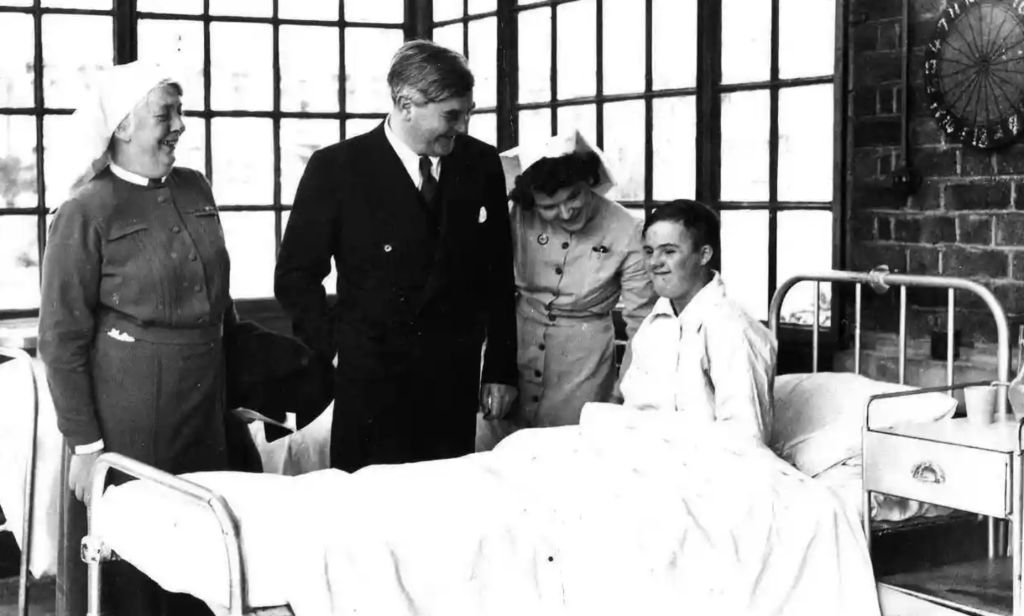
Establishing the NHS
Since 1948, the NHS has grown into an incredible service, from Britain’s first heart transplant in 1958 to Europe’s first liver transplant in 1968.
Renowned for their large-scale vaccination programmes, the NHS protected children from whooping cough, measles and tuberculosis – and in 1999, the meningitis C vaccine was offered nationally as a global first.

The NHS has delivered huge advances in health care – not only have they carried out revolutionary liver, heart and lung transplants, but they were also the first health service in the world to begin Covid-19 vaccinations. They continue to strive to pioneer new treatments and technologies, such as bionic eyes and the world’s first rapid whole-genome sequencing service.
And following the shocking impact that Covid-19 had on our National Health Service, now is the perfect time to offer gratitude for decades of selfless, tireless and relentless work.
A Sentimental 50p
Therefore, to not only pay tribute to the 75th anniversary of the NHS, but to also offer appreciation for their care, compassion and devotion throughout the years, The Royal Mint have issued a new coin range.
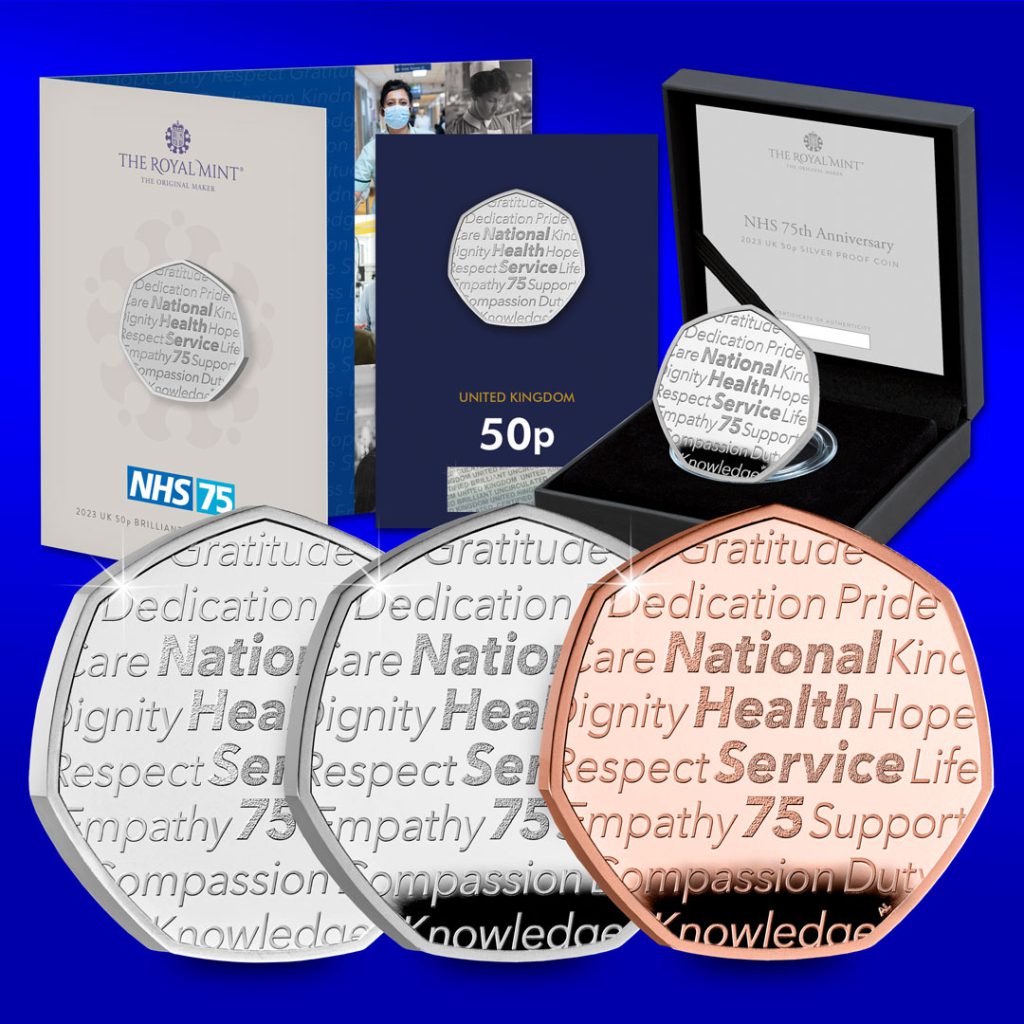
Available in Brilliant Uncirculated Quality, Silver Proof and Gold Proof, your 50p coin features a design that showcases words of appreciation for our NHS workers, both past and present.


